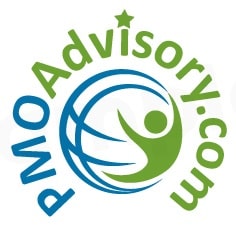These seven tasks should help leaders more easily adapt to like bimodal IT and shake off the stereotype of being inflexible and bureaucratic.
1 Acquire the right people, knowledge, skills and collaborative behaviours
This is the cornerstone of a highly effective PMO, says Gartner. When project managers who are part of a PMO act like administrators, they erode the PMO’s credibility and make it appear to be focused only on everyday tasks and deliverables.
2 Identify and execute high-impact, high-visibility initiatives
It can take years to build a track record of improving PPM maturity and getting better IT investment results. It is, however, possible to quicken the process by identifying ‘easy wins’ and improving delivery for a few highly visible and important PMO projects.
3 Report on what the business really cares about
The business’s view of the PMO is inconsistent. Business executives generally agree the PMO should report on the status of projects and programmes, but most don’t think it does this adequately.
4 Build a framework that shows how the PMO aligns with strategic enterprise objectives
A clear framework is essential to articulate the PMO’s alignment with the continuously evolving organisational goals and direction. It also serves as an aid to identifying goals and milestones along the road to resolving obstacles and issues that block strategic success.
5 Provide senior managers with simple, unambiguous information
PMOs are routinely perceived as failing to provide the kind of data that senior managers want. This leads to a disconnection between expectations and perceived reality. PMOs need to shift from a belief that ‘the more detail we give, the better’ to an iterative evolution of reporting that provides leaders with the kind of information that supports them in their role.
6 Highlight the PMO’s achievements
Agreed metrics are important, but they should be complemented by promoting the PMO’s success stories to the organisation. This is less about ‘hard’ numbers and more about the tangible benefits that are recognised by stakeholders, such as how shorter timescales for project completion have contributed to the solving of key business problems (overlong time-to-market for new products, for instance). In terms of benefits that are hard to measure, it may be appropriate to use surveys to measure the value the PMO provides.
7 Evolve the PMO to support bimodal IT and digital business
The PMO must adapt its service model to support the technological changes at the heart of every growth and innovation-led transformation project. For example, a PMO may have been formed several years ago, with the economic downturn being the primary driver.
– Chloe Green for Information Age, excerpted from the article, “Gartner reveals seven best practises for effective project management” click here to read the article in its entirety.
Well said! PMO Advisory is excited to offer courses throughout the year designed for project professionals interested in Portfolio (PfMP), Program (PgMP), Project (PMP & CAPM) Risk (PMI-RMP) Management, and Agile (PMI-ACP) certifications.

